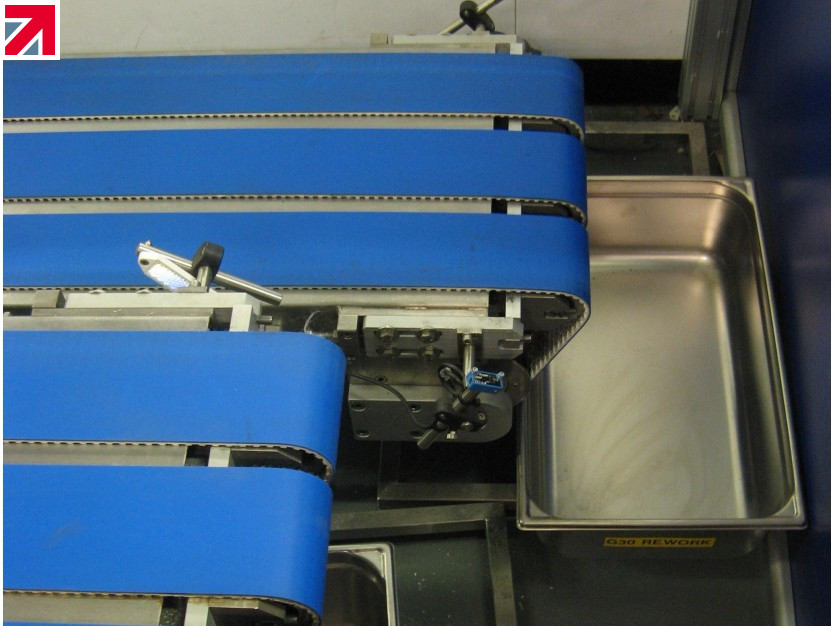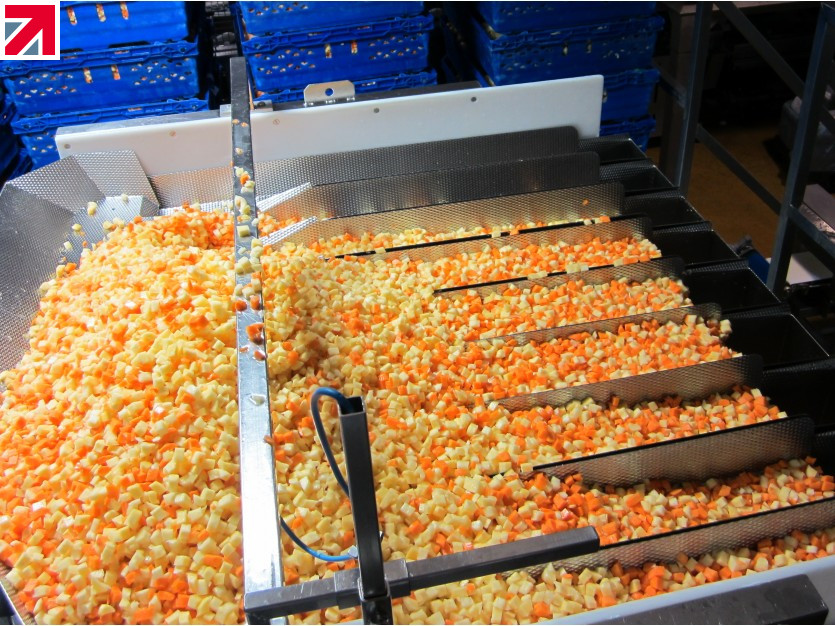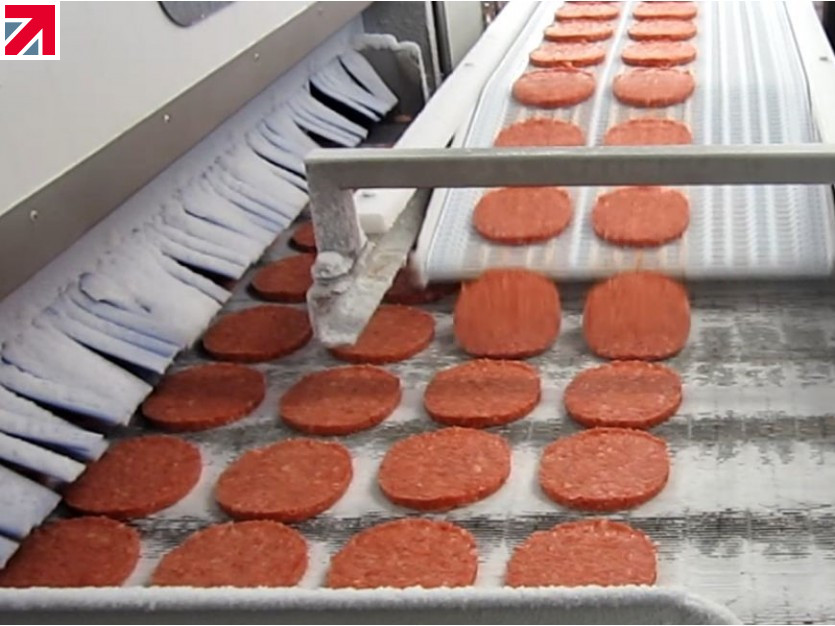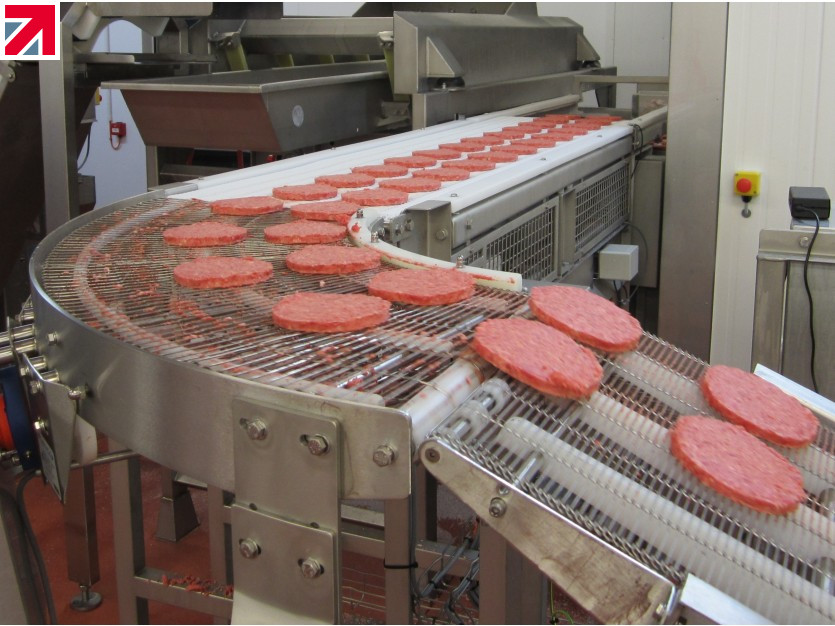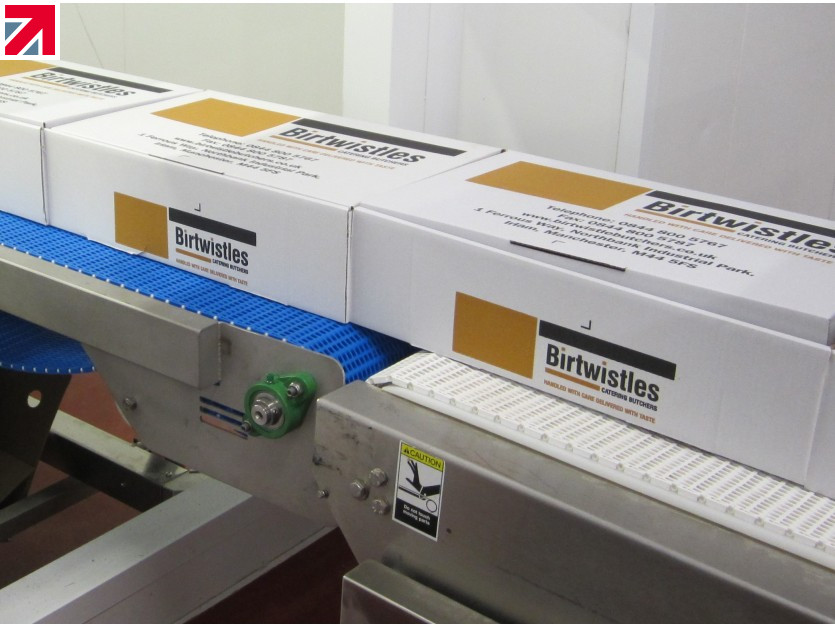In this article we are going to cover what is a conveyor system is, their applications, how they are used, what their applications are, and other elements relating conveyor systems. If you would like to discuss how conveyor systems could help your food processing business or would like to visit the manufacturing facility where we design and manufacture conveyor systems contact Wrightfield we are here to help. Lets start with an overview of conveyor systems.
Moving Products, Removing Manual Handling
Conveyor systems are used in a wide variety of industries as a standard item of mechanical handling equipment to move products, raw materials, food products, ingredients, goods, raw goods, and an almost limitless set of other materials from one location to another, usually within the same production area or building. Because they remove a significant element of manual handling they are extremely handy for businesses that deal with bulky goods, heavy items, raw materials, and mass-production items.
Coping With All Shapes & Sizes
Conveyor systems ( when configured correctly) allow for an efficient and speedy transportation of a businesses products and materials. In there largest formats i.e. the automotive sector conveyor systems move bulky heavy cars down a production line through each production stage. This ability to cope with a avriety of sizes, shapes and speeds makes them popular in the food processing industry, food production industry, material handling, packaging industries as well as the manufacturing industries.
Fixed or Portable Conveyors
Conveyors are often transporting items from one process to another so are fixed into position with ancillary equipment. There are a wide range of add on’s available to allow them to connect to an existing or non-conveyor system. Alternatively portable conveyors are available which can easily be moved around and joined / linked to the the required processing stage. Portable conveyors allow you to put the conveyor into a different area and reposition depending production volumes. These portable conveyors also are known as mobile line shaft conveyors. They are particularly popular in the parcel delivery and logistics sector where the ability for easy configuration if there is an influx of deliveries throughout the day, week, month, or year.
Compound Annual Growth Rate of 4.5% for Conveyor Systems
The growth of the conveyor systems market is largely driven by the handling of of high volumes of goods in warehousing and manufacturing facilities as conveyor systems contribute a major part of the material handling systems. As these systems are vital for the continuous transportation of goods from one area to another in a large number of industrial, food processing and commercial facilities, as they help to significantly reduce both production time and labour costs. For this reason manufacturers are focusing on the further and continued automation of the material handling and movement within industries to further improve manufacturing process efficiencies.
Speeding Up Production
Since Henry Ford introduced conveyors to speed us production of his cars conveyor systems have become a common element for mass distribution, material handling and production in a wide range of industries. Add to this the incorporation of Smart and innovative technologies such as barcode and RFID that facilitate dimensioning as well as in line scanning. Conveyor systems can also be integrated with labeling stations and automated printing which allows streamlining both processes to be systemised continuously. Combine that with minimal damage while on the conveyor, increased speed and accuracy of throughput then these advantages are expected to increase the market size.
Top 5 Benefits of using a conveyor system
- The wide variety of options to run the conveyor system to match the exact food processing or production requirements,. Hydraulic, mechanical, and fully automated systems are available or can be designed to meet individual needs
- Failsafe’s, and safeguards mean that conveyor systems can be installed in most food processing situations while usually being able to add value and increase the safety of the workplace due to automation,
- Conveyors can safely transport materials from one level to another through elevated conveyors. Wrightfield have designed and manufactured numerous elevator conveyors that can easily transport product upwards and throughout the factory
- Well designed and manufactured conveyors can move high quantities of items in various shapes, sizes, and weights
- The advanced safety features available prevent accidents and injuries while typically increasing throughput within the system
Where are conveyor systems typically used?
Conveyor systems are commonly used used in meat, poultry, ready meals, seafood, fruit and vegetable, bakery, live bird handling , containers and packaging, manufacturing and warehousing industries.
Thanks to the different conveyor belts available a wide range of materials and loads can be conveyed. Common conveyed items include food items such as meat, poultry, beans, nuts, canned foods, and vegetables, bottles, canned drinks through to automotive parts, medicines, aggregates, furniture, and much more.
Key conveyor selection factors include
- What it will be transporting,
- The speed of the conveyor
- Loads of that item(s),
- How much it needs to accumulate at a time,
- How long it takes to sort the items,
- Where the pickup points are,
- The widths and lengths
- Other specific factors relating to your business needs
Optimising Conveyor System Performance
Conveyor systems need to be maintained in order for them to run effectively, or just like any mechanical / electrical item they can break and be costly to replace, both in repair time and lost production downtime.
Wrightfield recommend that food processing businesses make looking after their conveyor systems a priority to ensure minimal loss of business and disruption to their food processing, manufacturing, packaging, or delivery process.
Companies using conveyor systems should evaluate certain aspects to ensure that conveyor’s are working at optimum capacities. This should be done through regular inspections, system audits, close monitoring of motors. The operational team running the system should be trained on and are aware of what to look for when identifying errors or problems.
Additionally we would always recommend
- that a complete set of spares are in stock for changeovers.
- have a preventive maintenance approach over reactive maintenance, this way you can stop your conveyor or motor getting to a point where it’s damaged where it could result in further damage down the line.
- Completing preventative maintenance is shown to be an effective way of preventing additional downtime of the whole system (which could beat a period of peak demand)
What is a conveyor system – Types of conveyor systems
There are a wide range of conveyor systems available and which conveyor you purchase or use depends on what you need the conveyor system to do. If you are unsure which conveyor system would be most suitable for your requirements contact Wrightfield on 01379 872800.
The list below outlines the different types of conveyor systems. Wrightfield manufacture shuttle conveyor, transfer conveyor, inclined belt conveyors, wire belt conveyor, slat conveyor, roller conveyor, multi lane and merge, spiral conveyor, activated roller belt, modular belt , flexible conveyors, cooling conveyors, metal detection conveyors, quick belt removal conveyors or Thermodrive for example
Aero-mechanical conveyors
Automotive conveyors
Belt conveyor
Belt-driven live roller conveyors
Bucket conveyor
Chain conveyor
Chain-driven live roller conveyor
Drag conveyor
Dust-proof conveyors
Electric track vehicle systems
Flexible conveyors
Gravity conveyor
Gravity skate wheel conveyor
Lineshaft roller conveyor
Motorised-drive roller conveyor
Overhead I-beam conveyors
Overland conveyor
Pharmaceutical conveyors
Plastic belt conveyors
Pneumatic conveyors
Screw or auger conveyor
Spiral conveyors
Vertical conveyors
Vibrating conveyors
Wire mesh conveyors
Each of these conveyor systems can be made bespoke for each business. Different ancillary equipment and add on’s added to ensure it can move the products at the required speed, handle the load. The conveyor belt is capable of coping with the material without becoming damaged
Are you looking for a conveyor system?
If you need a conveyor system, for the food industry Wrightfield can help you identify what conveyor system specification would provide you with optimum operating effectiveness and efficiency, increasing throughput and decreasing costs, contact Wrightfield today.
Find out more about Wrightfield Ltd on their member profile page here
Member-created content 4 years ago | From members
